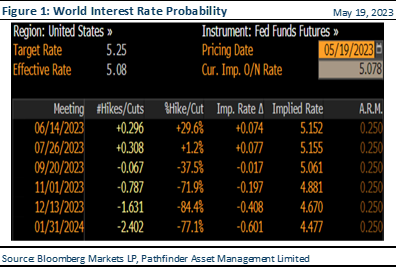Thoughts on Central Banks
Three weeks ago, we identified three areas of focus that we will be discussing this spring (the economy, employment and inflation). This week, we discuss the US Federal Open Market Committee (FOMC) and how it might approach its positioning in the coming months. One of the most difficult parts of finance is to predict what the FOMC will do and how “the market” will react. This is essentially one equation with two unknowns and tends to cause a lot of confusion for investors. It is also probably not predictable with any level of consistency. We note two quotes below that we thought were interesting from this perspective. One from Jamie Dimon, CEO of JPMorgan and one from Jerome Powell, US Fed Chair.
“And while this is nothing like 2008, it is not clear when this current crisis will end…. it will clearly cause some tightening of financial conditions as banks and other lenders become more conservative…We are seeing people reduce lending…. It won’t necessarily force a recession, but it is recessionary.” – JPMorgan Chase ($JPM ) CEO Jamie Dimon
“You will have noticed that in the statement for March, we had a sentence that said the committee anticipates that some additional policy firming may be appropriate. That sentence is not in the statement anymore…you will know that the summary of economic projections… this was the ultimate high level of rates. “ – US Federal Reserve Chair Jerome Powell
Figure 1 presents the probability of a potential hike or cut for US rates at the coming meetings, calculated from Fed Funds futures. It indicates that at the next meeting, there is a 30% chance that the FOMC will hike rates. However, it also says that 7 months out, there is an 84% chance the FOMC will rate cuts 2.5 times. If you look at the same data for Europe, the market believes that there is a 95% chance of an ECB rate hike at the next meeting.

This means that the current outlook from central banks around the world is diverse. While corporations are seeing some signs of implied tightening from bank failures, central banks, depending on what part of the world they manage, have very different views from each other. It is difficult to have a convicted opinion, and even if one did, “the market” reaction will be difficult to gauge. For example, is an 80% probability of 2.5% rate cut in January of 2024 positive for equities because we have avoided recession and will start a new economic cycle? Or is it negative because we have formally entered a recession and the FOMC was too aggressive for too long, and needs to cut quickly to try to fix its error? It’s probably truly impossible to tell.
National Instrument 31-103 requires registered firms to disclose information that a reasonable investor would expect to know, including any material conflicts with the firm or its representatives. Doug Johnson and/or Pathfinder Asset Management Limited are an insider of companies periodically mentioned in this report. Please visit www.paml.ca for full disclosures.
Changes in Leverage. We are increasing the asset ceiling to 2.0 times the market value of equity for Pathfinder International Fund and Pathfinder Real Fund to be consistent with Pathfinder Partners’ Fund and Pathfinder Resource Fund
*All returns are time weighted and net of investment management fees. Returns from the Pathfinder Partners’ Fund and Partners’ Real Return Plus Fund are presented based on the masters series of each fund. The Pathfinder Core: Equity Portfolio and The Pathfinder Core: High Income Portfolio are live accounts. These are actual accounts owned by the Pathfinder Chairman (Equity) and client (High Income) which contain no legacy positions, cash flows or other Pathfinder investment mandates or products. Monthly inception dates for each fund and portfolio are as follows: Pathfinder Core: Equity Portfolio (January 2011), Pathfinder Core: High Income Portfolio (October 2012) Partners’ Fund (April 2011), Partners’ Real Return Plus Fund (April, 2013), and Partners’ Core Plus Fund (November 2014).
Pathfinder Asset Management Limited (PAML) and its affiliates may collectively beneficially own in excess of 10% of one or more classes of the issued and outstanding equity securities mentioned in this newsletter. This publication is intended only to convey information. It is not to be construed as an investment guide or as an offer or solicitation of an offer to buy or sell any of the securities mentioned in it. The author has taken all usual and reasonable precautions to determine that the information contained in this publication has been obtained from sources believed to be reliable and that the procedures used to summarize and analyze such information are based on approved practices and principles in the investment industry. However, the market forces underlying investment value are subject to sudden and dramatic changes and data availability varies from one moment to the next. Consequently, neither the author nor PAML can make any warranty as to the accuracy or completeness of information, analysis or views contained in this publication or their usefulness or suitability in any particular circumstance. You should not undertake any investment or portfolio assessment or other transaction on the basis of this publication, but should first consult your portfolio manager, who can assess all relevant particulars of any proposed investment or transaction. PAML and the author accept no liability of any kind whatsoever or any damages or losses incurred by you as a result of reliance upon or use of this publication.